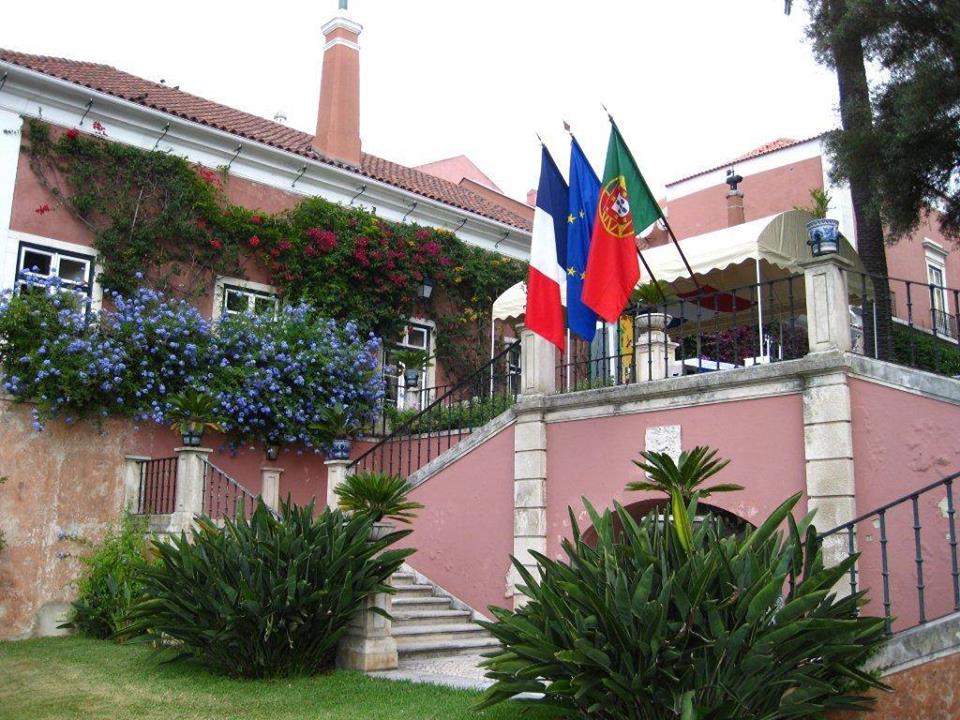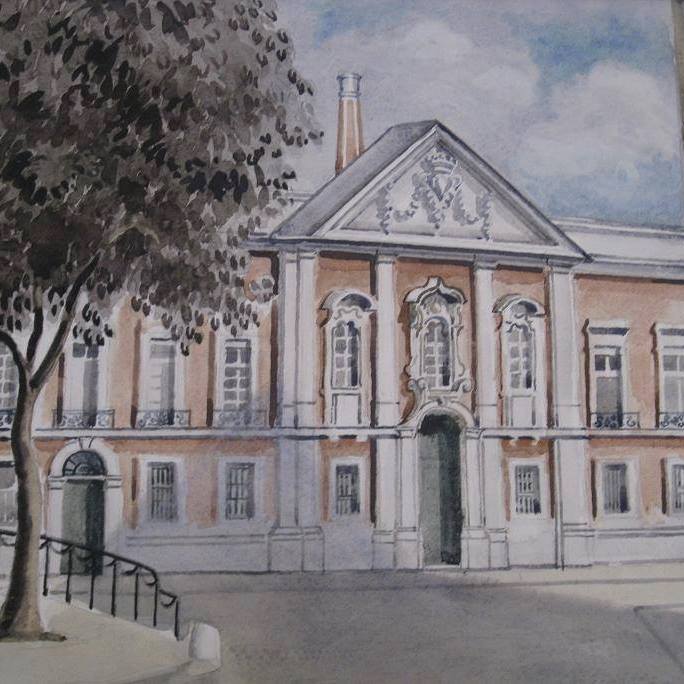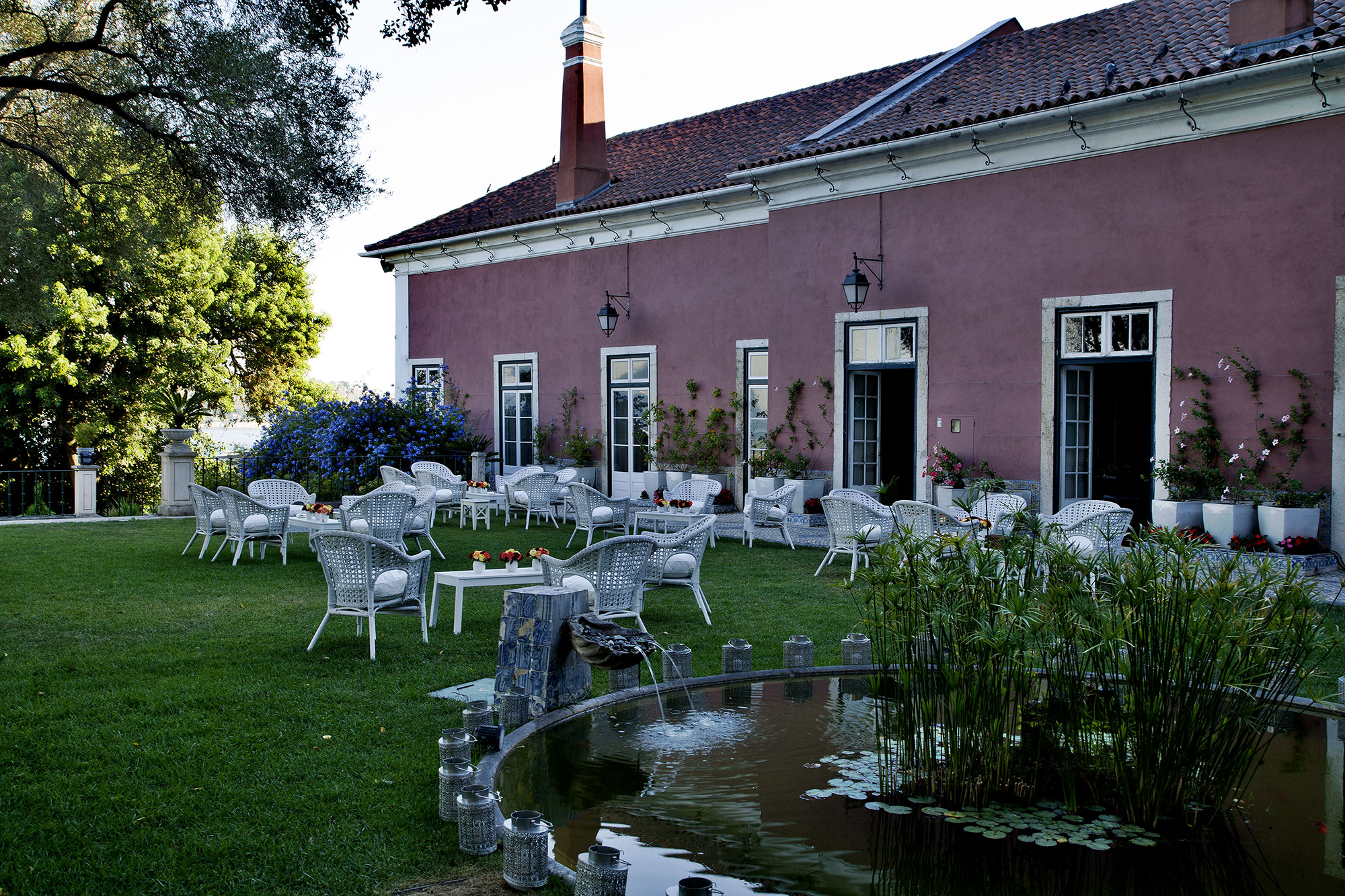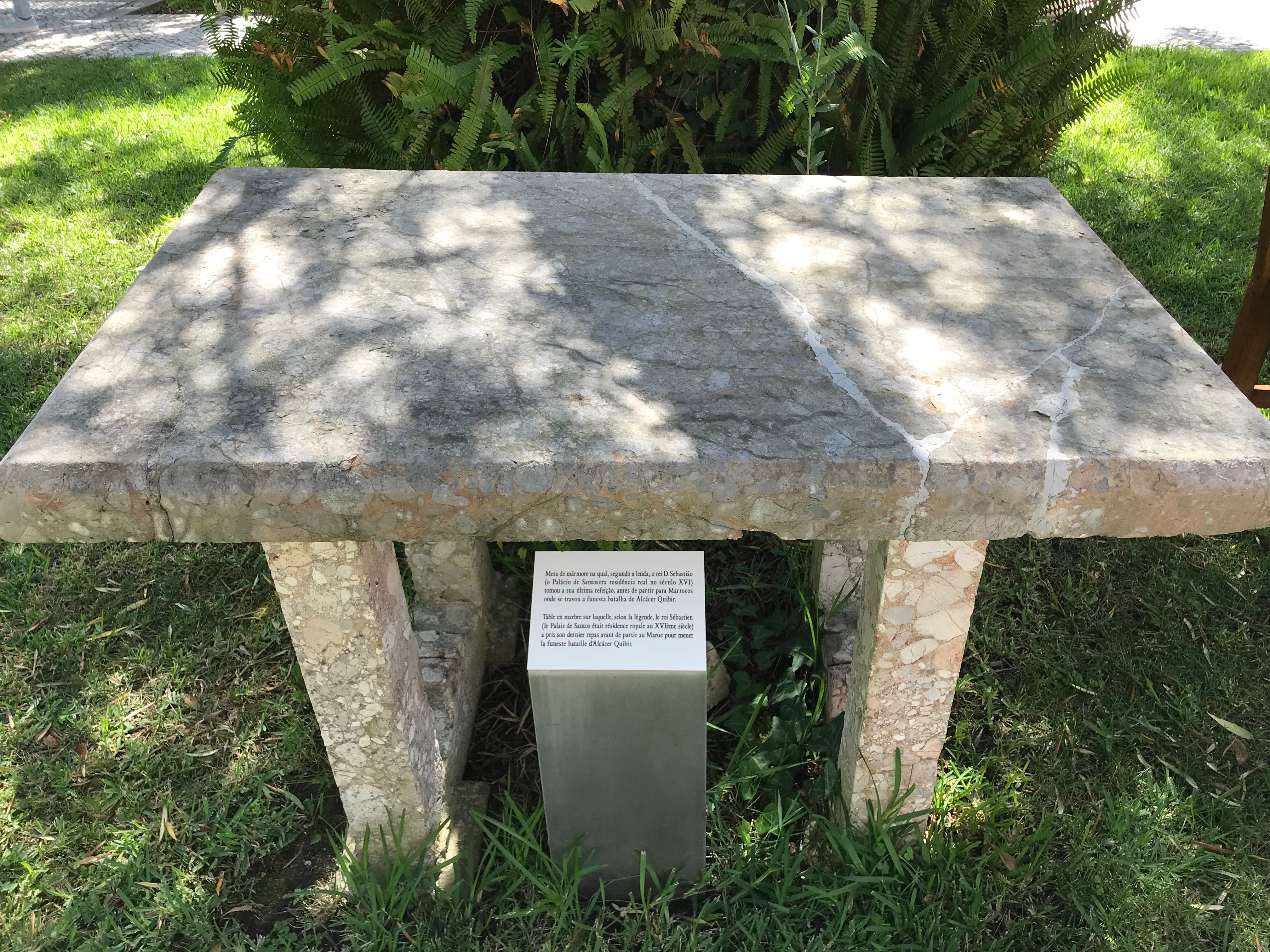The Portuguese Royal Palace that is Embassy to the French in Lisbon

Several Portuguese Kings, a Brazilian Empress and aristocratic families lived in the historical Palace of Santos.
The history of the palace dates back to the Visigoths: the name Santos refers to the three Christian martyrs that were killed on top of a Lisbon hill. In their memory a temple was built in 589 but it was destroyed afterwards.
In the XII century, D. Afonso Henriques rebuilt the church and gave it to the Order of Santiago, which built a contiguous building so that they could settle there. As the monks left for the Reconquista of the nation in the south, the buildings were transformed into a convent for aristocratic women (the Comendadeiras) who, in 1490, abandoned it for a new one. For that reason, it became known as Santos-o-Velho (Santos-the-Old).

Watercolour of the main façade of the Palácio de Santos, now the French Embassy in Portugal
In 1497, under the rule of D. Manuel I, the palace is transformed into a royal residence, given its great location facing the river, right between downtown Lisbon and the up and coming area of Belém. It was used by the monarch and two of his predecessors: D. João III and D. Sebastião.

In 1510, Gil Vicente put on some shows in the palace and from there left D. Sebastião to Alcácer Quibir. It is told thtat on the eve of his departure, the King had his last meal at the marble table that can still be found in the garden.

After D.Sebastião had disappeared, the palace is abandoned and it is bought by D. Francisco Luís de Lencastre, Comendador-Mor of the House of Avis in 1629. The family kept the palace for over 300 years and later gained the title of Marquis of Abrantes.
In the XIX century the palace was restored, and it suffered several modifications. In 1833, Infanta D. Maria Ana de Bragança and her husband, the first Duke of Loulé, rented part of palace. The same happened with D. Amélia of Beauharnais (D. Pedro’s widow), who lived there between 1841 and 1849.
When the 8th Marquis of Abrantes died in 1870, the palace was rented to Count Armant, French Minister in Lisbon. The French government bought the palace in 1909.

Its rooms, decorated with very rare tiles and frescos, display a unique collection of Xvii and XVIII century furniture. The main attraction of the palace is a very original little room, with a pyramidal ceiling completely covered in Eastern China, the China Room.

With its magnificent garden of several levels and an incredible view over the Tagus, Palácio de Santos is the official French Ambassador residency and it’s been regarded as one of the most beautiful French embassies in the world. Every now and then the palace opens its doors to the public for cultural visits and it is usually used for French companies to hold events in Portugal.
Articles liés

- Populaires Récents









